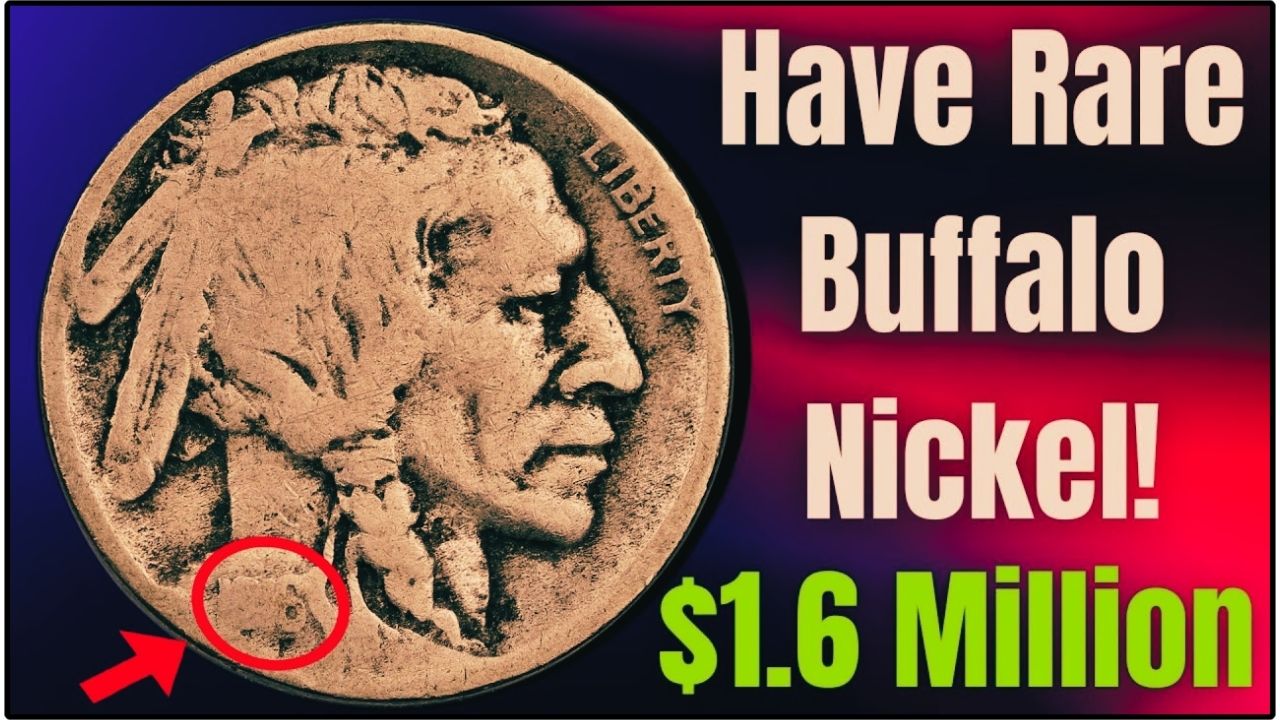Imagine finding an old nickel in your change jar — worn, faded, and seemingly worth just a few cents. Now imagine discovering that it’s actually worth $875,000. That’s the incredible reality behind the rare No-Date Buffalo Nickel, a coin with a fascinating history and a potential six-figure price tag.
What Is the No-Date Buffalo Nickel?
The Buffalo Nickel — officially known as the Indian Head Nickel — was minted from 1913 to 1938. It features a Native American profile on the obverse and an American bison on the reverse.
Over years of circulation, the date (placed on a high point of the design) often wore away. Most “no-date” nickels are common and worth little. But certain rare varieties — including minting errors, overdates, and low-mintage runs — can be worth a fortune.
For background, see the U.S. Mint’s history of coin designs.
The History Behind the Coin
When the Buffalo Nickel debuted in 1913, it replaced the Liberty Head design. The coin was admired for its bold imagery but criticized for its high-relief date placement, which wore down quickly in circulation.
While most worn no-date nickels have minimal value, rare overdates (like the 1916/1918), certain mint marks, and unique errors from the early 1920s are in high demand.
Why One Sold for $875,000
The record-setting price is linked to exceptional rarity and top-grade condition. A pristine 1916/1918 overdate or a unique mint error from the 1920s can fetch hundreds of thousands. Factors that drive these sky-high prices include:
- Scarcity – Few exist in top condition
- Historical significance – Tied to early U.S. Mint production quirks
- Provenance – Previous ownership by notable collectors adds value
- Demand – Buffalo Nickels are beloved among numismatists worldwide
Key Factors That Increase Value
| Factor | Impact on Price |
|---|---|
| Mint Year | Rare dates (1913–1926) are most valuable |
| Mint Mark | San Francisco (“S”) and Denver (“D”) rarities are highly sought |
| Condition | Uncirculated examples command huge premiums |
| Variety | Overdates and double-dies increase value |
| Provenance | Auction history boosts desirability |
How to Identify a Rare No-Date Buffalo Nickel
- Check the Reverse – Look for subtle doubling or unusual bison features.
- Examine Under Magnification – Some rare coins still show faint traces of the date.
- Look for Mint Marks – Located below FIVE CENTS; “S” and “D” mint marks can be more valuable.
- Get Authentication – Use a professional grading service like PCGS or NGC.
Quick Comparison: Common vs. Rare No-Date Buffalo Nickels
| Feature | Common Nickel | Rare Valuable Nickel |
|---|---|---|
| Condition | Heavily worn | Crisp details, minimal wear |
| Date | Completely gone | Faint or partially visible |
| Variety | Standard | Overdate, double-die, rare mint mark |
| Value | $0.50–$2 | Up to $875,000 |
Notable Auction Records
- A pristine 1916/1918 overdate sold for nearly $350,000.
- Unique mint error specimens have reached between $100,000 and $875,000.
- Even well-worn rare types can sell for thousands.
Expert Tips for Collectors
- Never clean a coin — it damages surfaces and reduces value.
- Store coins in dry, protective holders to prevent further wear.
- Research auction archives before selling.
- Join numismatic forums to learn spotting techniques and track market trends.
FAQ
Q: Are all No-Date Buffalo Nickels valuable?
No. Most are worth under $2 unless they are rare varieties or mint errors.
Q: Where can I find one?
Inherited collections, estate sales, flea markets, and coin rolls from banks.
Q: What’s the best way to sell one?
Have it authenticated, then sell through reputable coin dealers or major auction houses.
Final Thoughts
The rare No-Date Buffalo Nickel proves that not all treasures sparkle — some are dull, worn, and hiding in plain sight. While most are worth little, a handful can reach six-figure prices.
If you’ve got a jar of old coins, take a closer look. That ordinary nickel could be your $875,000 moment.



